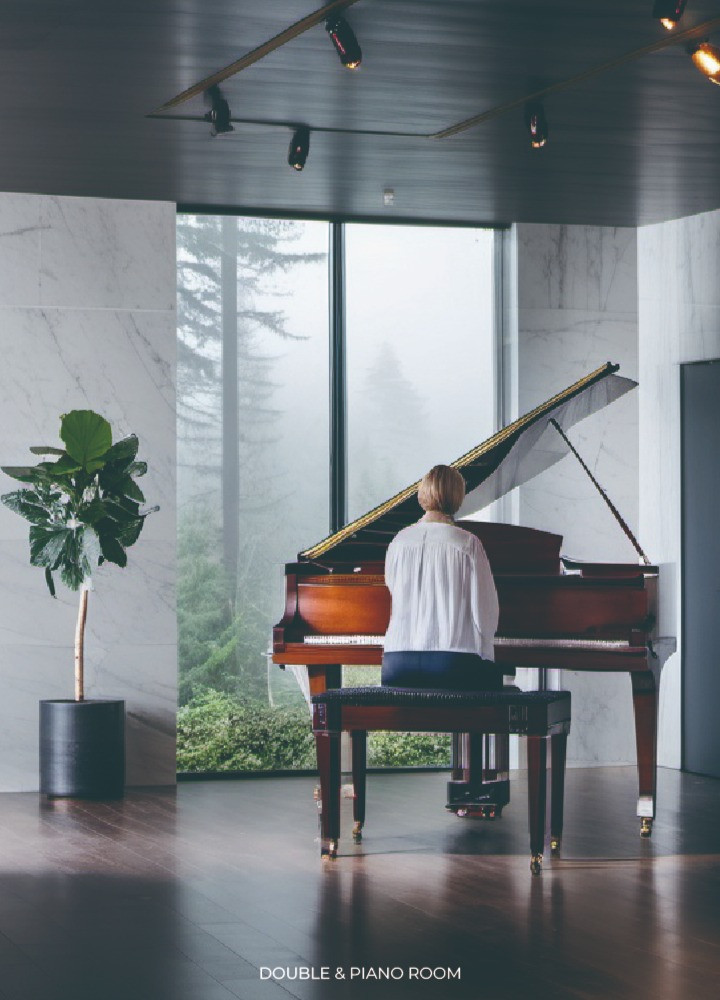5 key facts about this project
At first glance, the project showcases a refined architectural aesthetic, characterized by clean lines and a modern silhouette. The design integrates various elements, including open spaces that encourage natural light to permeate through the interior, creating a warm and inviting atmosphere. This emphasis on light and openness reflects an understanding of the psychological benefits associated with well-lit environments, enhancing the overall well-being of the occupants.
The project features a diverse palette of materials that contribute to both its functionality and visual appeal. The use of exposed concrete not only provides structural integrity but also adds a raw, urban texture that resonates with the surrounding environment. Large glass facades are strategically incorporated, allowing for visual continuity between indoor and outdoor spaces. This transparency serves to blur the boundaries between the interior living areas and the exterior landscape, fostering a connection with nature that is increasingly vital in urban design.
In addition to concrete and glass, warm wooden accents are integrated throughout the project, bringing in organic elements that soften the overall aesthetic. These materials work in conjunction with energy-efficient technologies, underscoring the project’s commitment to sustainable architecture. From solar panels to rainwater harvesting systems, the design anticipates future-forward living, allowing residents to engage with their environment in a responsible manner.
The layout of the project is meticulously planned, ensuring functional zoning that caters to various uses. Residential units are designed with flexibility in mind, enabling residents to personalize their spaces according to their needs. Common areas, such as lounges and communal gardens, are carefully positioned to encourage social interaction, thus promoting a sense of belonging among the community. This consideration for communal spaces is a key aspect of the design, illustrating an understanding of modern urban living where social connectivity is essential.
Unique design approaches characterize this project, particularly in its response to environmental challenges. The architectural composition does not merely seek aesthetic appeal; it also prioritizes environmental integration and resilience. Techniques such as green roofs and vertical landscaping provide ecological benefits while enhancing the visual character of the building. These biophilic elements promote biodiversity and create a micro-ecosystem within the urban fabric.
Further emphasizing the holistic nature of the design, the project engages thoughtfully with its surrounding context. It respects the existing architectural styles while introducing contemporary elements that enhance the character of the neighborhood. The respectful dialogue between old and new not only preserves local heritage but also revitalizes the area, offering fresh opportunities for engagement and interaction among residents and visitors alike.
In summary, this architectural project stands as a compelling example of modern design, where functionality meets aesthetics in harmony with the environment. It serves a variety of purposes while fostering community engagement and sustainability. Readers interested in exploring this project further are encouraged to review the architectural plans, sections, designs, and ideas that illuminate the intricacies and thoughtful considerations behind this innovative undertaking. The exploration of these elements may provide deeper insights into how effective architecture can shape our lives and communities.


























